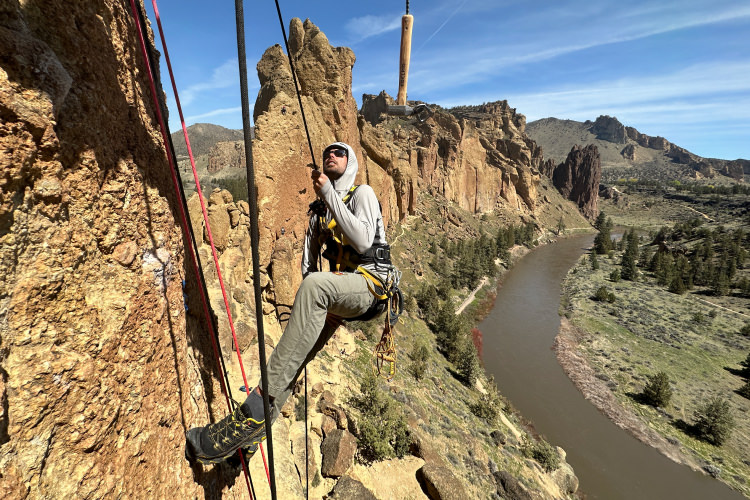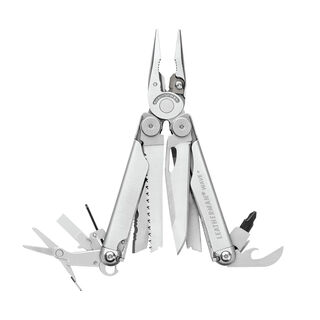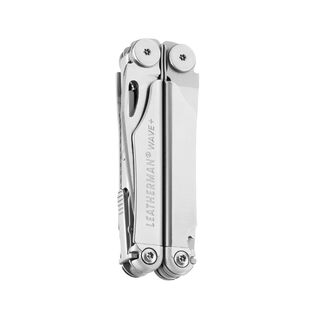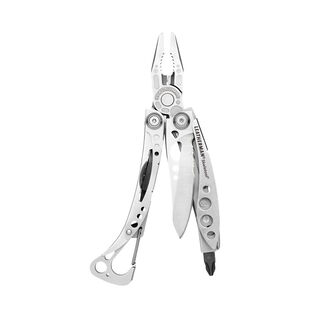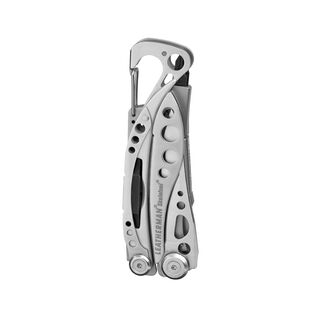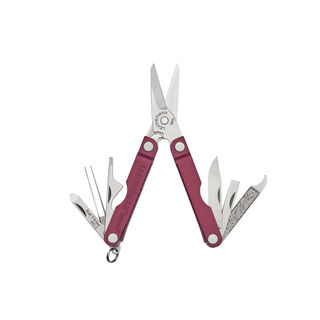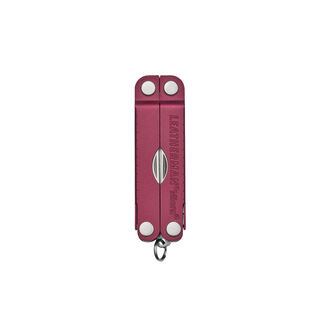Intro
Stephen Gladieux, Senior Operation Excellence Manufacturing Engineer here at Leatherman, is part of a group called High Desert Climbers Alliance. The group organizes monthly rebolting projects at Oregon’s famed Smith Rock state park where they climb, clean, and maintain popular routes. Working all day on the wall, they remove old hardware and replace it with new gear to keep it safe and usable for climbers. Here’s a day on one of those projects as told by Stephen.
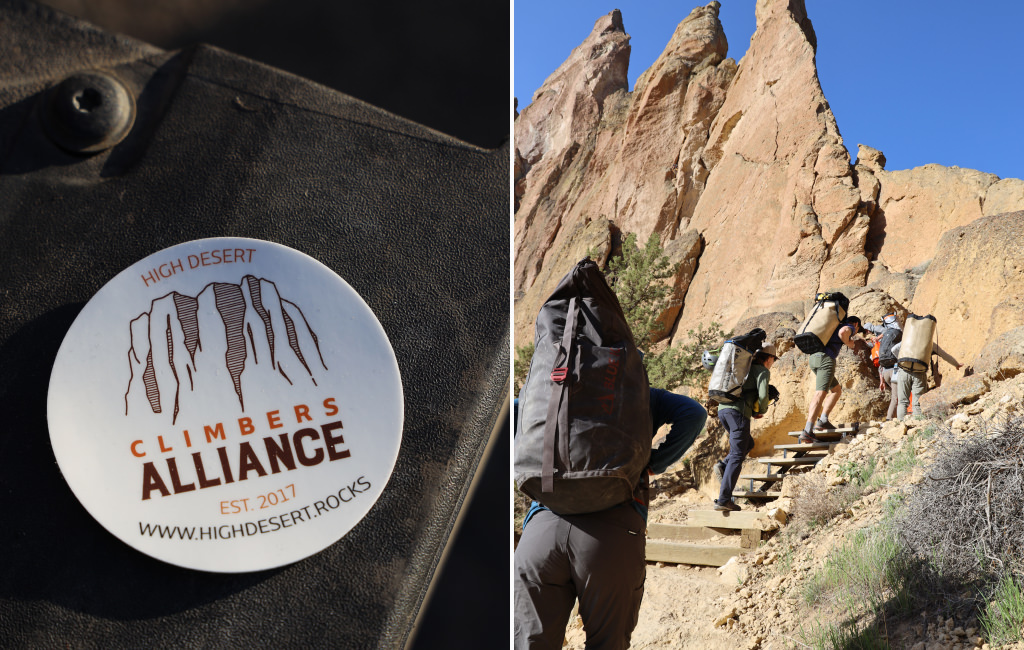
Rebolting at Smith Rock
Climbing has been a huge part of my life. It has connected me to my closest friends. It has supported me through every stage. I care a lot about the safety of the climbing community – I think of the community as a mix of my best friends, and friends I haven’t met yet.
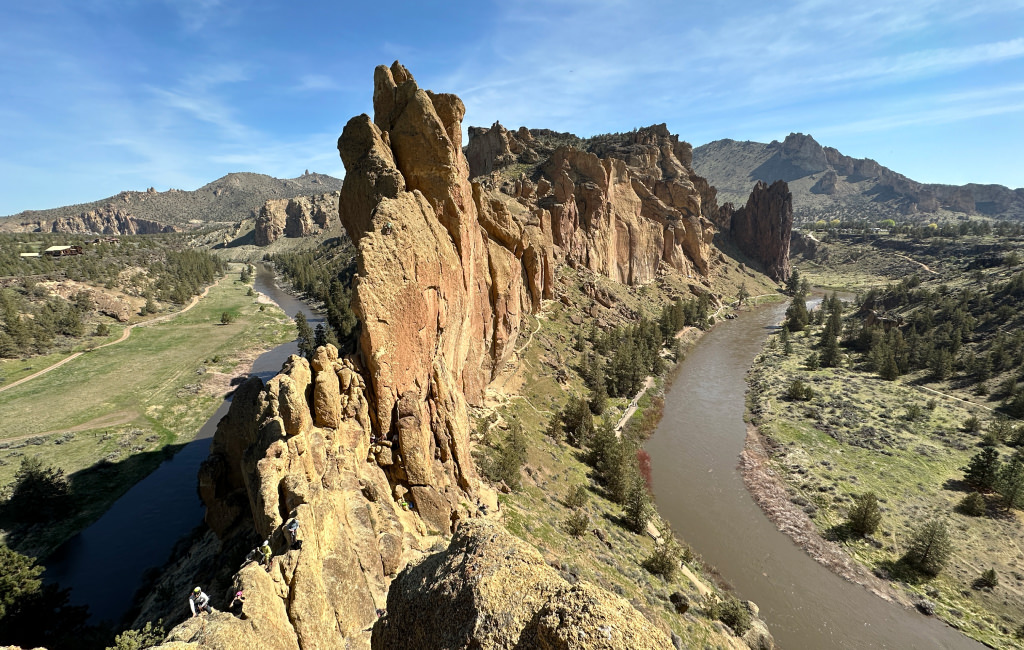
“Smith Rock state park is truly a national treasure.”
Leatherman has a ton of outdoors people, and quite a few are climbers – I fit right in when I started working at Leatherman in Engineering. I’ve been climbing since I was 9 years old. I’ve guided professionally, and I represent climbing safety on an international level. I first got involved with rebolting many years ago, and when I moved to Oregon I got involved again. Smith Rock state park is truly a national treasure.
A really common form of climbing (called sport climbing) relies on steel or titanium anchors previously placed in the rock – generally called “bolts” by the climbing community. These can look something like the wedge anchor you’d use at home to attach something to the concrete floor in your garage. They can look like screws or sleeve anchors, like drop-in anchors, or like grooved eye bolts that are glued in place with structural resin. They all have a functional lifetime. It is important to remove and replace them before they are so dangerous that they cause accidents. The job of removing old anchors and placing new ones is called “rebolting”.
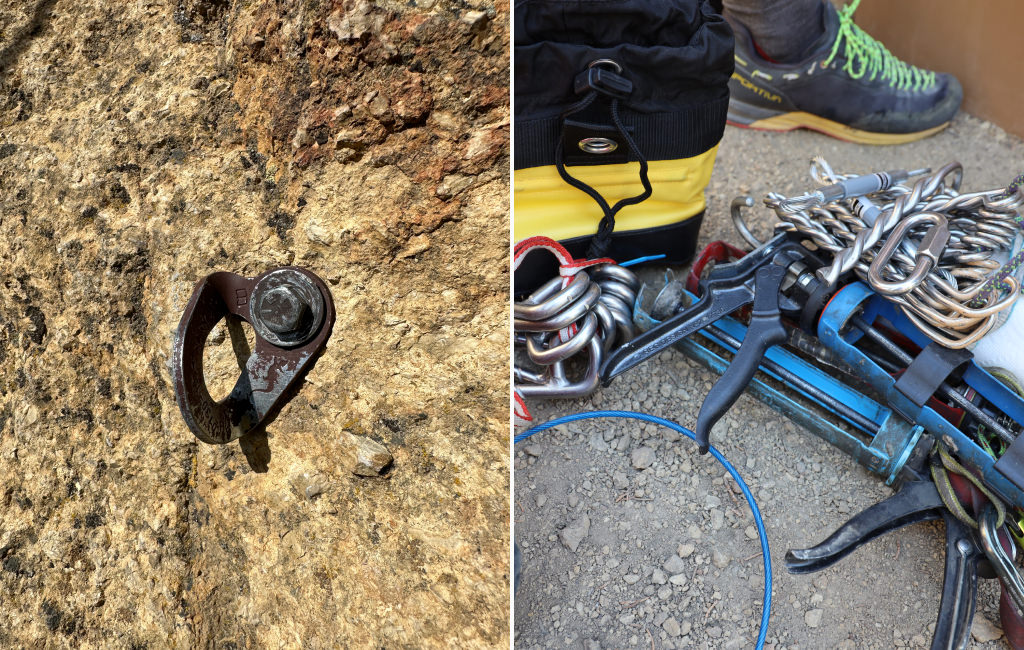
Smith Rock state park is right outside Terrebonne, OR. It has an incredibly iconic skyline. It’s been a crucible of American sport climbing with so many classic routes put up here over the decades. People travel from all over the world to climb at Smith, but a lot of the bolts are still original hardware and aging quite dramatically. Things are even more complicated since most of the climbing at Smith is on a type of rock called Volcanic Tuff. It has made many cherished and memorable climbing routes, but it’s also very soft and poorly cohesive – that means that in addition to being past their expected lifetime most of the bolts here were not really well-suited to this type of rock.
The climbing community learned about installing hardware appropriate to the rock type and environment over decades and we have a much better understanding now. The UIAA (the international body that works on climbing safety standards) recently updated their Rock Anchor Standard in a big way.
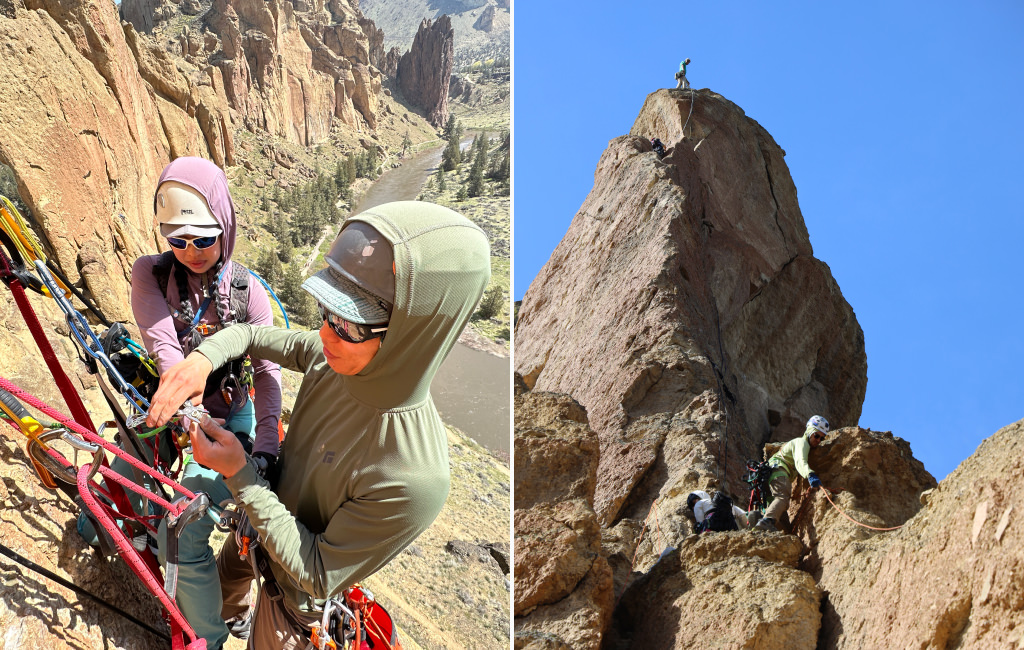
Some years back, the local climbing community recognized the need to replace climbing anchors. The High Desert Climbers Association (HDCA) was formed to take on the job as well as work in conservation and be a voice for the community on access and policy. I joined the HDCA about four years ago and have spent more days than I can count hanging in the freezing cold or blazing sun rebolting. We’re custodians working on safety for everyone’s sake. We take that role seriously and cut no corners on safety. We also strive to place new hardware in the exact same location. This means removing every piece of each old, rusted, bent, and smashed up bolt no matter how high off the ground or what type of original hardware.
“we’ve got a lot of heros on our team.”
It’s a tough job, and not for everyone. Only a small fraction of climbers establish new routes, and only a small fraction of those folks put in the time years later to replace their hardware. Also consider that it is MUCH more difficult to rebolt than it was to place the first generation when the climbing route was developed. We’re lucky in that we have a great community and climbers of all backgrounds are interested in helping. Each fall we teach clinics to get our new volunteers ready for the winter months of rebolting. Every year, those clinics grow our team of skilled rebolters. We’ve really been accelerating our work the past few years, and we’ve had great support from the Park.
We prioritize routes and areas based on a lot of criteria. We look at the general age of an area, and really popular routes tend to be high on our list, but when someone reports a dangerous bolt we leap into fast action. Sometimes we can get to a critical bolt in under 48 hours. There are a lot of heroes on our team who sacrifice to keep the community safe.
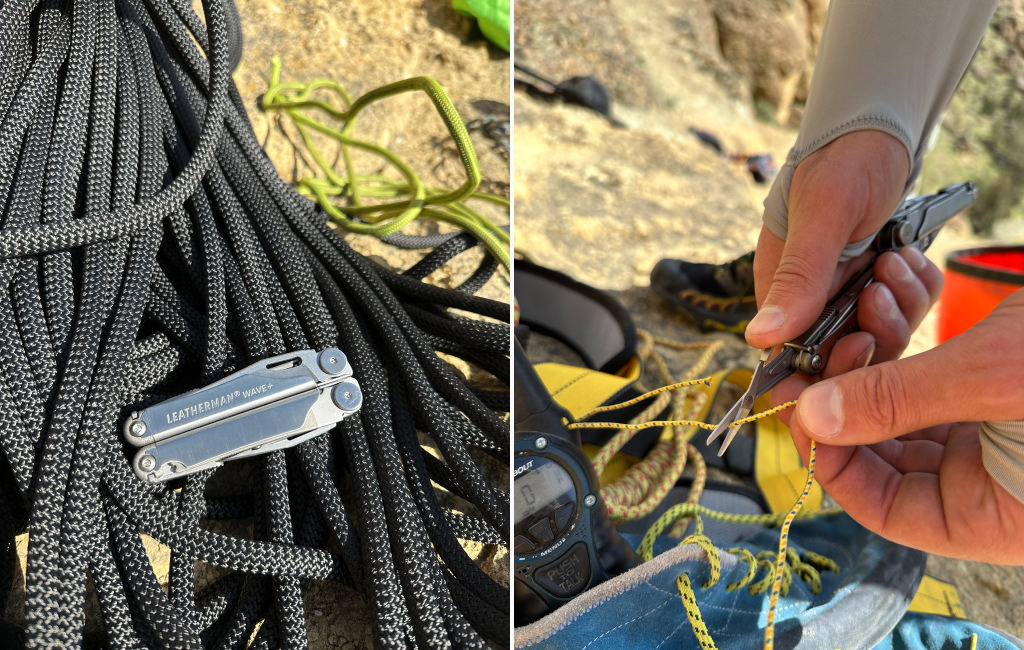
“I always keep a Leatherman tool on me.”
This past Saturday we set a record for our biggest workday yet. We had 23 volunteers who got up early enough to meet at 6:45 a.m. and bake in the blazing sun all day. We coordinated with the park and targeted 11 pitches of climbing around Sky Ridge. Our goals were ambitious and complex. We worked on two of the most classic lines in the park: Sky Ridge and Wherever I May Roam. One is three pitches and ascends a slanting arete, the other is five pitches and wanders the far side of the formation. We also had some large, unstable rocks to move 60m off the ground. The plan involved starting work early, making as much progress as we could before lunch, then clearing the area and closing trails while we lowered rocks, and then trying to beat the scorching sun to finish.
I always keep a Leatherman tool on me. The bolts we remove come in a dozen varieties. Each has many steps to remove, all finicky, all fraught. Having a Leatherman means I have one really versatile tool along with a rebolting kit full of tools that can only do one thing each. With any given bolt, it is hard to predict what will go wrong, or make it a difficult extraction, so a versatile tool allows me to react and get tasks done without having to dig around for a specific tool. It also adds redundancy if it turns out a tool I need was left at the base, or not put back in the kit the previous day.
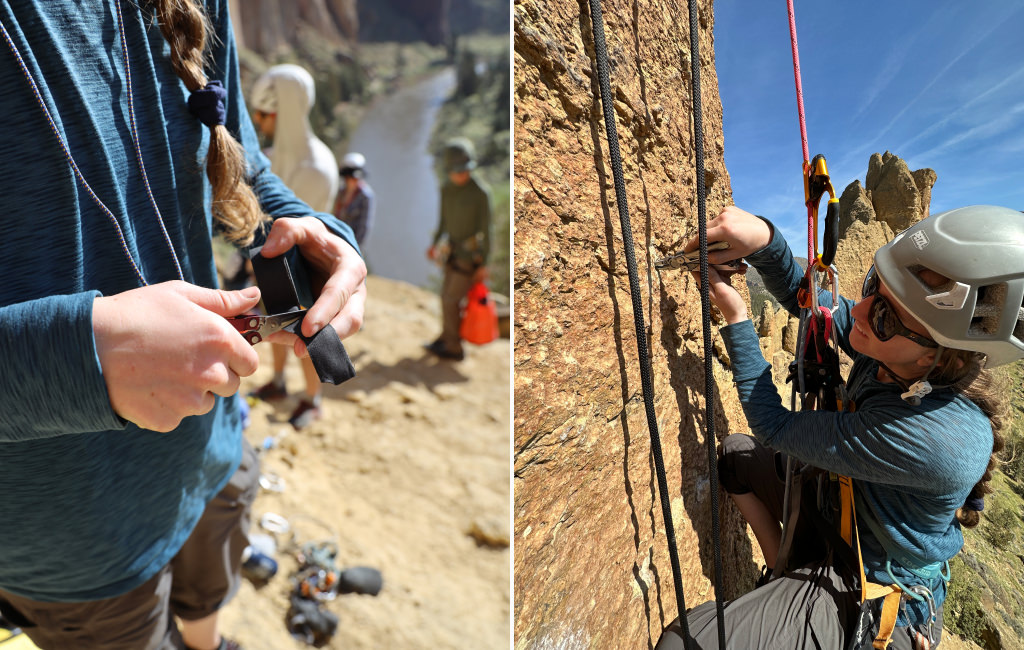
“…a versatile tool allows me to react and get tasks done.”
The most common bolt we remove is called a “5-piece”. Removal requires around 20 tools. Our rebolting kits get in more disarray throughout the day and accumulate scrap metal from the bolts we remove. I’m able to fish a piece of sleeve out of deep within a hole with the pliers. I can grab a cone or nut struck on the threaded rod of a bolt puller – that usually takes two pliers or vise grips to do, so a Leatherman on hand makes things quick.
A day like last weekend meant having crews working in different places. It was difficult to get supplies to the base of each area. Getting to some routes required climbing over Asterisk pass, a 4th class climb to get to the west side of Smith. It’s really important to have that redundancy and versatility in each tool kit.
There are a lot of hazards working on rope. To mitigate the risk of dropping tools (in addition to all the other dangers) every tool needs a tether. It always seems like a new tool is brought into play, or one has a worn tether. We frequently need to cut more cordelette for a tether. A Micra® on a leash around the neck, or a Wave®+ in a sheath means we can always do that.
When I’m working on a route, I extract all the bolts, pulling out each funky piece. I drill the hole out to the correct depth and size for the new anchors going in – I exclusively place resin anchors in the volcanic tuff, mostly Twisted Leg anchors. It is really important to test fit the holes with those. Then, I brush and blow out the hole. Next, I tape around the edges to keep resin smearing to a minimum. It is important to prep all the placements before starting to glue.
On a warm day, the resin used at Smith can gel in under two minutes. It is critical to minimize the time to set each new bolt. When a resin tube is empty, I can quickly cut open a new tube of resin with the scissors or knife on my multi-tool and finish the hole before the resin sets. Nothing is more frustrating than a resin anchor that only got pushed partway into the hole when the resin hardened! That’s why the Smith Rock rebolting season is during the winter months.
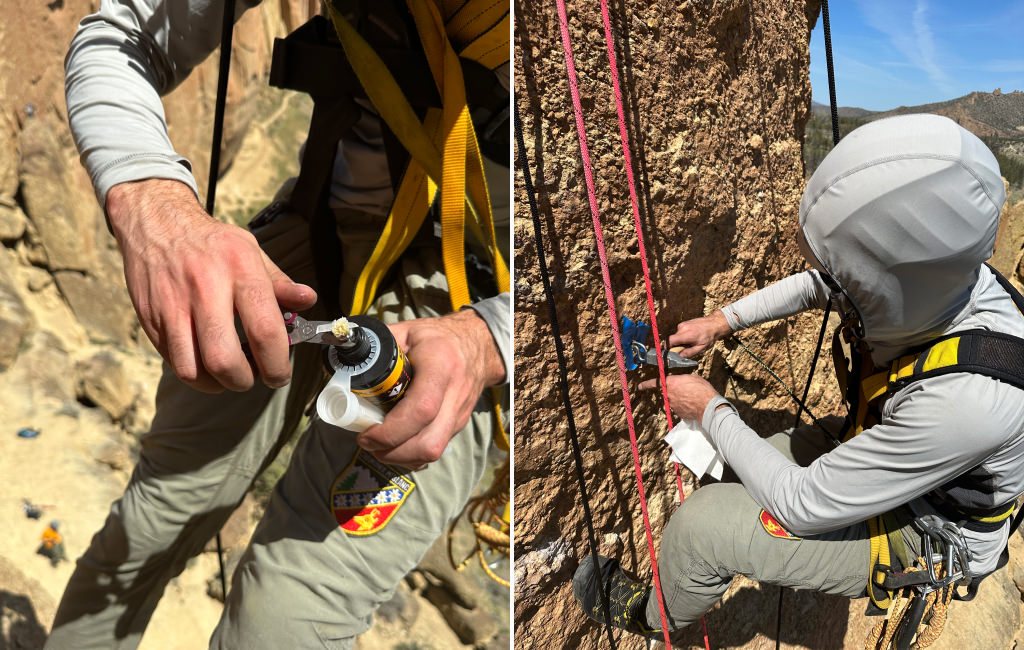
“I can quickly cut open a new tube of resin…”
Despite our best efforts, we almost always end up working into the twilight and exiting by headlamp. Occasionally, we have follow-up work to finish the next day, but we try to keep the disruption to climbing access as short as possible. Anything that speeds up the process is appreciated.

This past weekend we started in the shade, we fought stuck bolts and resin hardening in the sun, and worked extra hard to finish in the daylight and enjoy a warm evening. It was the end of a good season of hard work, new friends, and amazing support from Smith Rock; and so many climbing companies and nonprofits. We ate well-earned burritos, and sat in the grass talking about the season behind us and plans for the future. With the sun’s ire fading into more of an early spring embrace, with our work behind us, we laughed and were wrapped in the knowledge that we’re keeping our friends safe.

